Exploring Generative AI’s Impact on Public Education.
Generative AI solutions have garnered considerable attention across industries, including the recently published “Next Productivity Frontier” report, released by McKinsey & Company in June 2023, which focused on the economic potential of Generative AI, i.e., the potential to contribute trillions of dollars in value to the global economy. While the focus of Generative AI research has been on sectors such as banking and high-tech, the implications for public education merit a closer examination.
Generative AI and Support for Teachers.
In a recent conversation with a veteran Public Primary School Teacher, we discussed their time distribution throughout a typical academic year. Approximately 50% of their time goes to teaching, 30% to content preparation, and 20% to administrative tasks. This prompted us to consider the potential benefits Generative AI could bring.
AI’s potential in education holds the promise of a transformative impact. Vast opportunities emerge for personalizing education, enabling students to optimize their potential. Yet, a substantial challenge lies in utilizing AI appropriately to tailor learning experiences for individuals.
Envision a scenario where students access personalized virtual assistants with sophisticated data analytics. These assistants provide precise, customized feedback, guiding students toward relevant study materials and exercises, enhancing their academic performance. AI also empowers educators with insights from virtual assistants, identifying common challenges and enabling the creation of more effective instructional materials.
This amalgamation of AI and education is set to revolutionize the traditional learning paradigm, fostering a learner-centric environment.
What is Generative AI?
Generative AI is a type of artificial intelligence that can create new data or content, such as text, images, music, etc., based on the data it has been trained on. For example, Generative AI can write a product description, design a logo, create new product ideas based on customer feedback, and generate personalized content, reports, or recommendations for business customers based on their preferences and behaviour.
Now imagine if Generative AI liberated an extra 25% of a teacher’s time for teaching. With 75% of their time dedicated to teaching, teachers could offer more tailored instruction, individual learning support and foster critical thinking. This investment of human expertise could significantly improve students’ learning experience and their academic capabilities.
However, it’s crucial to view AI tools as complements, not substitutes, to teaching. Human connections, emotional support, and adaptability remain essential in primary education.
Generative AI and Teaching.
Generative AI can support teachers in a broader variety of ways including adaptive learning platforms provide personalized learning experiences and track progress; intelligent tutoring systems that offer individualized guidance and real-time feedback, empowering teachers with far greater analytical insight; targeting and addressing learning gaps; automated grading and feedback streamline grading processes, saving teachers time; language learning support aids in pronunciation and interactive exercises; content creation and lesson planning assist teachers in generating engaging materials; classroom management tools aid in discipline and behavior monitoring;
“As a teacher, I believe Generative AI, despite posing concerns about its integration with the teacher’s role in the classroom, should prompt us to carefully consider how to best incorporate it into the educational process. By doing so, we can bridge the gap between students and the digital reality they engage with daily from a young age.
Never before has teaching been such a challenging task. As an institution, the School has a responsibility to adapt and evolve while retaining its ability to nurture critical and socially conscious citizens.”
Enhancing Personalized Learning and Student Engagement
One of the most significant advantages of Generative AI in education lies in its potential to revolutionize personalized learning. As AI technologies can analyze vast amounts of data, they can better understand individual student needs, strengths, and weaknesses, enabling teachers to tailor their instruction more effectively.
For example, adaptive learning platforms equipped with Generative AI can assess students’ strengths and weaknesses and then present students with customized learning paths, offering content and exercises aligned with their specific requirements. For example, if a student struggles with a particular topic, the AI-powered system can identify knowledge gaps and provide additional resources or targeted practice to reinforce understanding.
Moreover, AI-driven intelligent tutoring systems can offer individualized guidance, provide students with real-time feedback and adaptive learning experiences, and track progress. Teachers can use these tools to monitor students’ performance and identify areas that require additional attention. This personalized approach not only enhances student engagement but also fosters a deeper connection between students, the subject matter, and the teacher.
Intelligent Tutoring Systems
AI-based intelligent tutoring systems can provide individualized guidance to students, offering interactive and personalized instruction. These systems can reinforce concepts, provide explanations, and offer immediate feedback. Teachers can leverage these tools to support student learning and offer additional resources as needed.
Empowering Teachers with Data-Driven Insights
Incorporating Generative AI in educational settings, teachers gain access to valuable data-driven insights about their students’ progress and learning patterns. AI-powered analytics can generate comprehensive reports, highlighting students’ strengths and areas that require further attention.
These data insights empower teachers to make more informed decisions, tailor their instructional methods, and identify effective strategies for enhancing student learning outcomes. Using data effectively can transform teachers into learning facilitators, adapting their approach based on evidence-based findings to create more impactful educational experiences.
Addressing Learning Gaps and Fostering Inclusivity
Generative AI technologies can play a significant role in identifying and addressing student learning gaps. By continuously assessing individual performance and understanding student progress, AI tools can help educators design targeted interventions and support mechanisms for students who need additional assistance.
Moreover, AI-powered language learning support can be especially beneficial for students with diverse linguistic backgrounds. The technology can provide targeted language exercises, pronunciation feedback, and immersive language learning experiences, ultimately fostering inclusivity in the classroom.
Creating Collaborative Learning Environments
Generative AI can facilitate collaborative learning experiences among students, encouraging peer-to-peer interactions and knowledge-sharing. Virtual collaboration tools equipped with AI can enable students to collaborate on projects, solve problems collectively, and engage in meaningful discussions.
Additionally, AI-powered platforms can assist teachers in identifying group dynamics and fostering positive collaboration. By analyzing social interactions within the classroom, AI tools can provide valuable insights into group dynamics and ensure an inclusive and supportive learning environment.
Speech Recognition and Language Learning
AI-powered speech recognition tools can assist in language learning activities. They can provide pronunciation feedback, offer interactive language exercises, and simulate conversations. Teachers can utilize these tools to enhance language acquisition and provide targeted language support.
Empowering Teachers with Content Creation and Lesson Planning
AI technologies, such as natural language processing and machine learning, can assist in creating engaging educational content and lesson plans. They can suggest relevant resources, generate interactive materials, and offer insights based on student performance data. Teachers can benefit from these tools to streamline content creation and access a borader range of teaching resources.
For example, by leveraging AI for content creation, teachers can access a diverse range of teaching resources and stay up-to-date with the latest educational trends. This saves time and enables teachers to focus on refining their instructional strategies and fostering engaging learning experiences for their students.
Augmented Reality and Virtual Learning Experiences
Generative AI can also be harnessed in conjunction with augmented reality (AR) and virtual reality (VR) technologies to create immersive learning experiences. These technologies can transport students to historical events, distant landscapes, or even inside the human body, providing them with an interactive and engaging way to explore complex concepts.
For example, by merging AI-generated content with AR/VR simulations, teachers can offer students an unparalleled level of engagement and understanding. Such experiences can leave a lasting impact on students, making the learning process more enjoyable and memorable.
Evaluating Student Performance and Feedback
AI tools can automate grading assignments, quizzes, and tests, saving teachers valuable time. These tools can analyse student performance, provide instant feedback, and generate performance reports.
Generative AI can revolutionize the assessment process giving teachers with more comprehensive insights into student performance. For example, through automated grading and feedback systems, AI can analyse and evaluate students’ performance, saving teachers valuable time on manual grading. Teachers can focus more on instructional activities and spend less time on manual grading.
Additionally, AI-powered assessment tools can identify patterns in student performance, helping teachers identify areas where the entire class may require additional support or areas where certain students excel. Armed with this information, teachers can adapt their instructional approaches to better address the needs of individual students and the class as a whole.
Promoting Lifelong Learning for Educators
As AI technologies continue to evolve, they can significantly contribute to professional development opportunities for educators. For example, AI-powered learning platforms can provide teachers with personalized training programs, helping them acquire new skills, explore innovative teaching methodologies, and stay updated with the latest educational advancements.
Furthermore, AI can assist teachers in identifying areas where they can improve their teaching practices. AI-generated feedback on their instructional approaches can provide valuable insights and promote a culture of continuous improvement among educators.
Classroom Management Tools
AI-powered classroom management tools can help teachers in maintaining discipline, monitoring student behaviour, and identifying potential issues. These tools can provide insights into student engagement, attendance patterns, and overall classroom dynamics, enabling teachers to address individual needs effectively.
Are there risks to educators that use AI?
While there is significant hype surrounding Generative AI and its ability to transform education, it is essential to acknowledge its limitations. There are no doubt countless benefits but drawbacks must be considered e.g., the digital divide and accessibility challenges, ethical issues, and resistance to adopting AI technologies by teachers and students.
Addressing the Digital Divide and Accessibility Challenges
Despite the potential benefits of Generative AI in education, it is essential to recognize that the widespread adoption of AI technologies may exacerbate existing digital divides and accessibility challenges. Not all students have equal access to technology, high-speed internet, or the resources required to leverage AI-powered learning tools fully.
To ensure equitable access to AI-powered educational resources, it is essential for policymakers and educational institutions to address these disparities and invest in infrastructure that can support the integration of technology in the learning process. Initiatives such as providing devices to students from underserved communities and offering reliable internet connectivity are crucial steps toward promoting inclusivity in AI-powered education.
Nurturing Ethical AI Literacy Among Students
As AI becomes increasingly prevalent in various aspects of daily life, including education, it is essential to cultivate ethical AI literacy among students. Educators should incorporate lessons on AI ethics and responsible technology use into the curriculum to help students understand the implications and potential risks of AI technologies.
By nurturing ethical AI literacy, students can develop critical thinking skills and become responsible digital citizens who can navigate the complexities of an AI-driven world. Empowering students to understand the ethical implications of AI also encourages them to think critically about the technology’s impact and their role in shaping its responsible use.
Ethical Considerations and Responsible Implementation
When introducing AI technologies like Generative AI in educational settings, ethical considerations must be at the forefront of decision-making. Safeguarding student privacy, data protection, and ensuring that AI tools are designed with transparency and fairness are critical aspects of responsible implementation.
Teachers should clearly understand of how AI algorithms function and be actively involved in the decision-making process concerning AI integration in their classrooms. Training and professional development programs can be vital in empowering educators to leverage AI effectively while maintaining their role as skilled and empathetic instructors.
To integrate Generative AI into public education effectively, thoughtful discussions and evaluations are necessary. Understanding the evolving role of humans in the workforce is crucial. Responsible implementation directly aligned with the purpose of education can yield positive results. Furthermore, addressing concerns about potential job displacement is essential. Teachers should not view AI as a threat to their profession but rather as a tool that complements their expertise and enables them to focus on what they do best—nurturing students’ academic and personal growth.
Fostering a Growth Mindset
Integrating Generative AI in educational settings presents an opportunity to foster a growth mindset among students and educators. By demonstrating how AI technologies can augment human capabilities, educators can instil a sense of curiosity and a willingness to embrace innovation among their students.
A growth mindset encourages students to view challenges as opportunities for growth and learning rather than obstacles to be avoided. It also empowers educators to be open to adopting new teaching methodologies and leveraging AI as a tool to enhance their instructional practices continually.
So, by recognizing and addressing Generative AI’s limitations, and putting proper guardrails in place, educators can effectively harness its power while navigating its risks.
“Over the past few decades, we have witnessed a significant change in the teaching-learning process: it is no longer teacher-centric and has become student-centric. In the upcoming years, with the increasing widespread adoption of generative AI in teaching, we will see a new change: teaching will evolve to be AI-centric (or IA-guided), where both students and teachers are equally supported by AI tools.
This change will significantly affect, not only, the way of teaching and learning, but also what is lectured, either in terms of contents and knowledge and in terms of competencies.
Teachers, like students, will have to quickly adapt to this new reality where many of their current tasks are performed by AI assistants. Thus, both teachers and students will be challenged to perform different tasks, and probably some of which we are not even aware of yet.”
Conclusion
The integration of Generative AI in the public education sector holds significant promise for transforming the learning experience and empowering educators. By optimizing teaching time, personalizing instruction, and providing data-driven insights, AI technologies can support teachers in creating more impactful educational journeys for their students.
As we embrace the potential of AI in education, it is essential to approach its implementation with careful consideration of ethical implications, responsible use, and the need for equitable access to technology. AI should not be viewed as a replacement for teachers but rather as a complementary tool that empowers them to amplify their expertise and nurture student learning.
By fostering a growth mindset and nurturing ethical AI literacy among students, we can prepare future generations to navigate an AI-driven world responsibly and thoughtfully. As educational institutions and policymakers embark on this transformative journey, collaboration and thoughtful planning will be vital to unlocking the full potential of Generative AI in shaping the future of public education.
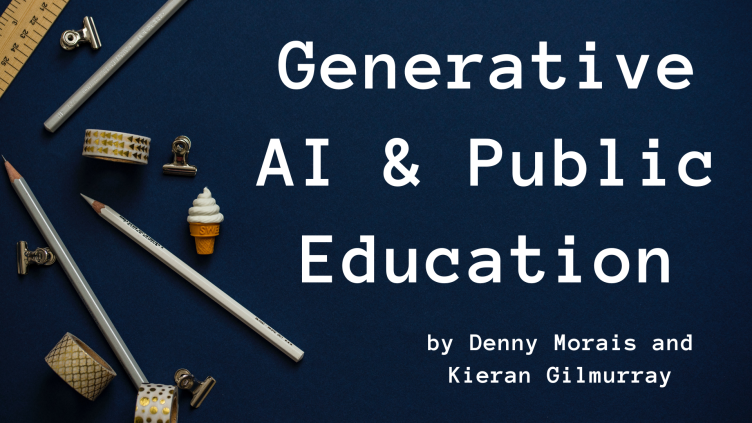

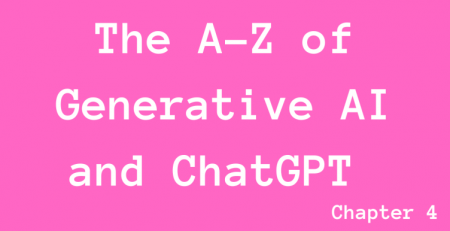
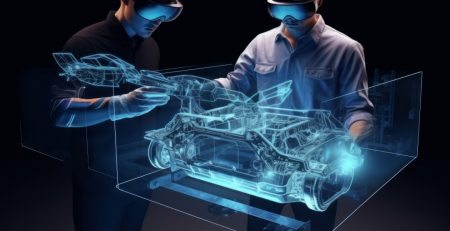



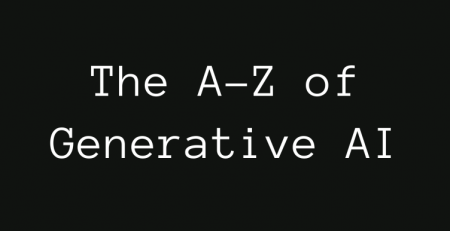

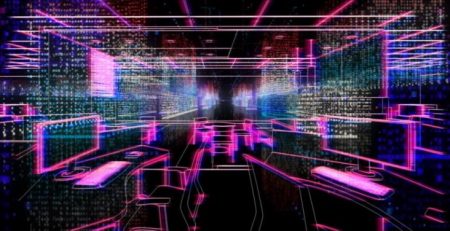
Leave a Reply